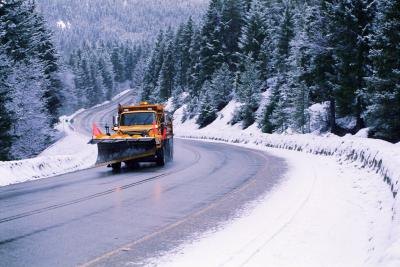Should You Let a Car Run Before Driving in the Cold
Monday, November 17, 2014 | Labels: a, before, car, cold, driving, in, let, run, should, the, you | |
Engine coolant temperature is a well-known facet of performance, but never forget that coolant temperature indicates only the temperature of oil and metal in the engine. If engine or oil temperatures are too low, the engine cannot deliver the horsepower, torque and fuel economy that its designed to. Add in emissions compliance and computer controls and youve got a smorgasbord of reasons to sit back and let the car warm up before you drive.
Temperature Basics
Things expand when they get hot. This basic tenet of physics is why the SR-71 Blackbird was 8 inches longer at mach three than in its hangar on the ground, and its why engines run better when hot. Engines contain dozens of parts, all moving at very high speeds and at close tolerances to each other. Automotive engineers build engines with the assumption that theyll run at a certain temperature; below that temperature, the engines internal clearances are too tight and the engine may seize up rather than spin.
Oiling
Temperature also has a powerful effect on oil. Engine oil is much like vegetable oil in that it thins with higher temperature. Engine oil thickens at very low temperatures, and will eventually gel -- like vegetable shortening -- to the point that it wont flow through the engine. The tight bearing clearances at low temperatures only exacerbate the oiling problem, posing further restrictions to oiling and increasing bearing wear. The German invasion of Russia during WWII brings to light the importance of oil temperature. While German crews attempted to keep tanks running by building fires under their engines oil pans, ultimately, oil freezing brought on by the brutal Russian winter sent those tanks and personnel carriers scurrying back to Europe.
Catalytic Converter Function
A catalytic converter is a two-part blast furnace. The first half of the converter catches unburned fuel, combining it with oxygen to complete the combustion. This process is just like the one in your engine, creating heat as a by-product of combustion. This heat drives the converters second stage, where nitrogen oxides and other pollutants convert to more inert forms. A converter takes time to "light off," and most fuel-injection computers will increase the fuel-to-air ratio in order to light the converter off more quickly. This change in fuel-to-air ratio will inevitably result in worse fuel economy and poor performance during the period of time before converter light-off.
Driver Comfort
Most cars have two radiators. All drivers are familiar with the engines primary heat exchanger, the one in front that transfers excess engine heat to the surrounding airstream. The engines second radiator -- known as the heater core -- also transfers engines heat to air, but in this case that air is ducted into the passenger compartment. Giving the engine a bit of time to warm up will ensure that the heater and defroster work when you sit down to drive. The heater is a pretty good indicator of engine temperature, so the rule of thumb is to wait for the heater to warm up before setting off.
Manufacturer Recommendations
Read the owners manual on some modern cars and youll find instructions that say not to allow the vehicle to warm up before driving away. Thats really more of a suggestion than a commandment, and it has everything to do with emissions. As mentioned, a catalytic converter works like a blast furnace, taking unburned fuel and converting it to heat to enable the converters secondary reactions. An idling car takes longer to light off the converter than one thats cruising down the road under an extremely fuel-rich cold-start mixture, so the manufacturers edicts regarding driving right away have more to do with emissions compliance than anything else. Its a numbers game for manufacturers; your cold engine is going to burn a lot of fuel and produce terrible emissions no matter what, so they figure it might as well be while youre moving down the road.


Post a Comment